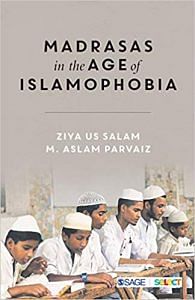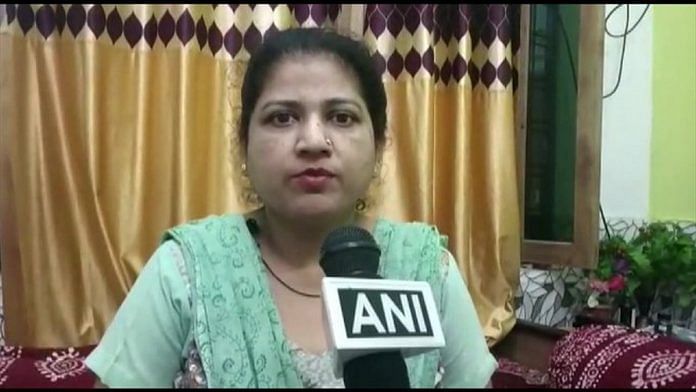Located just 70 kilometres from Rampur in western Uttar Pradesh, Kashipur is a typical small town of North India. Plenty of bustle in the market, lots of din in the morning and afternoon, before a complete calm descends post sunset. Wily-nily Kashipur found itself nudged into the Shayara Bano versus the Union of India case, popularly known as the Triple Talaq judgement. In August 2017, the Supreme Court of India invalidated instant triple talaq. Quoting from the Quran and Hadith, the learned judges felt the Talaq-e-Biddat or instant triple talaq enjoys no support from the Quran, thus stands invalidated. The judgement made national and international headlines as Bano’s quest to get the final word on triple talaq ended in the landmark judgement of the Supreme Court.
Yet, it could have all been avoided had the maulanas and the muftis in Kashipur given sane advice to Bano and her father who approached them following the receipt of a talaqnama through the post. It so happened that Bano’s estranged husband called her up when she was staying with her father in Kashipur following a dispute with her husband. He asked her to receive a post he had sent. A real estate agent, he claimed the document was about some property. The unsuspecting wife received it, only to get the shock of her life. The document was actually a talaqnama with the word talaq written three times. Attached was a cheque for her mehr (dower) and maintenance. Shocked, Bano and her father consulted the ulemma for a way out. The maulanas probably were not well versed with the Hanbali ruling under which multiple pronouncements of talaq at a single sitting are considered only a single, revocable divorce. Anyway, the qazis in Kashipur told Bano her marriage was over. Also, a little before the post from her husband, no local cleric told Bano how she could walk out of a violent marriage to an abusive man by opting for khula, a woman’s inalienable right to divorce.
Her family consulted the local clerics, and understood there was no way out for her. Hence, she approached the Supreme Court. Well, all this could have been avoided had Bano, instead of going to the apex court in Delhi, come down just 70 kilometres or so from her residence to Rampur. Here, she could have consulted scholars of Islam who would have told her the exact position of divorce in Islam, the clerics who would have quoted from the Quran’s Surah Baqarah and Surah Talaq, and not based their ruling on only a solitary instance from the life of a caliph. Bano could have even spoken to women scholars here. All this would have been possible had she even sought the counsel of the former students or staff of the half-a-century-old Jamea tul Salehat, an institution that prides itself in teaching its students to regard Islam as a way of life, and not just a series of rituals.
Unlike most madrasas which emphasize hifz alone at the initial stage, the girls’ only Jamea tul Salehat introduces its students to the meaning of the Quran, the context of the divine text from the early days. Take for instance, the morning assembly at the institution. Every morning, like in most public schools, the students here stand for an assembly where one of the girls recites a Surah from the Quran with perfect intonation. This not only boosts the confidence of the students to later recite from the Quran in addressing the general public, but was also considered a revolutionary step when this practice started in the early 1970s. At that time, most girls were not encouraged to recite the Quran with qirat at home. At Jamea it was different. Once a student had recited the Surah with qirat, another stepped forward to give its translation. This little first step meant that the students here understood what they read when they recited the Quran. That is not all. The students were given easy handbooks of founder Abdul Hai and noted Jamaat e Islami scholar Yusuf Islahi. The books dealt with every-day issues of life. For instance, the provision of talaq in Islam, the share of women in property, the method of offering funeral prayers, the special prayers in Ramadan, the Taraweeh, etc. Again, former students of the madrasa recall how the institution permitted all the girl students to stand in a funeral prayer of one of their classmates who had passed away in the late 1970s. Considering, women are still, by and large, excluded from funeral prayers in India, it was again, nothing short of revolutionary to involve girl students in a funeral prayer some 50 years ago. Equally importantly, the Jamea tul Salehat charted another course uniquely its own when it encouraged its students to offer daily salat in a congregation.
Yet again, in India, women are usually advised by clerics to offer their prayers in the inner rooms of their house rather than going to a masjid for daily or Friday prayers. Same for Taraweeh, the special prayer in Ramadan. The Jamea started with daily prayers in groups for girls. Initially, there were not enough good qaris to recite the Quran with perfect intonation. So group Taraweeh was avoided. It all changed a few years ago as girls worked on their skills, and started leading an all-girls jamaat. Incidentally, the Jamea is an all-women institution. All academics are women, the examiners are women too; the men being confined to security at the gate or in the skeletal support service only. It is remarkable considering it is a big institution spread across acres of land. Unlike most madrasas for boys, this place has space for a canteen, a general store, a bank and even a small hospital. Also, the students here do not sit on the floor to learn their lessons. While most madrasas for boys still expect the students to sit cross-legged in front of their benches, Jamea has had provisions for tables and chairs for close to 50 years. Incidentally, technically it started in 1972, but the old-timers of Rampur insist it was functioning for about a decade before that with a limited number of students. Maulana Abdul Hai was the founder of the institution. Hai’s aim was to come up with generations of women who will be well read, aware of their rights and responsibilities, and go on to be able mothers, sisters, daughters and wives. For him, social change had to begin with women. Feeling strongly about most madrasas not having any provisions for women, he set about establishing a special institution for women that is arguably among the best in the country today.
 This excerpt from Ziya Us Salam and M. Aslam Parvaiz’s book Madrasas in the Age of Islamophobia has been published with permission from SAGE Publications India. Rs 395.
This excerpt from Ziya Us Salam and M. Aslam Parvaiz’s book Madrasas in the Age of Islamophobia has been published with permission from SAGE Publications India. Rs 395.



